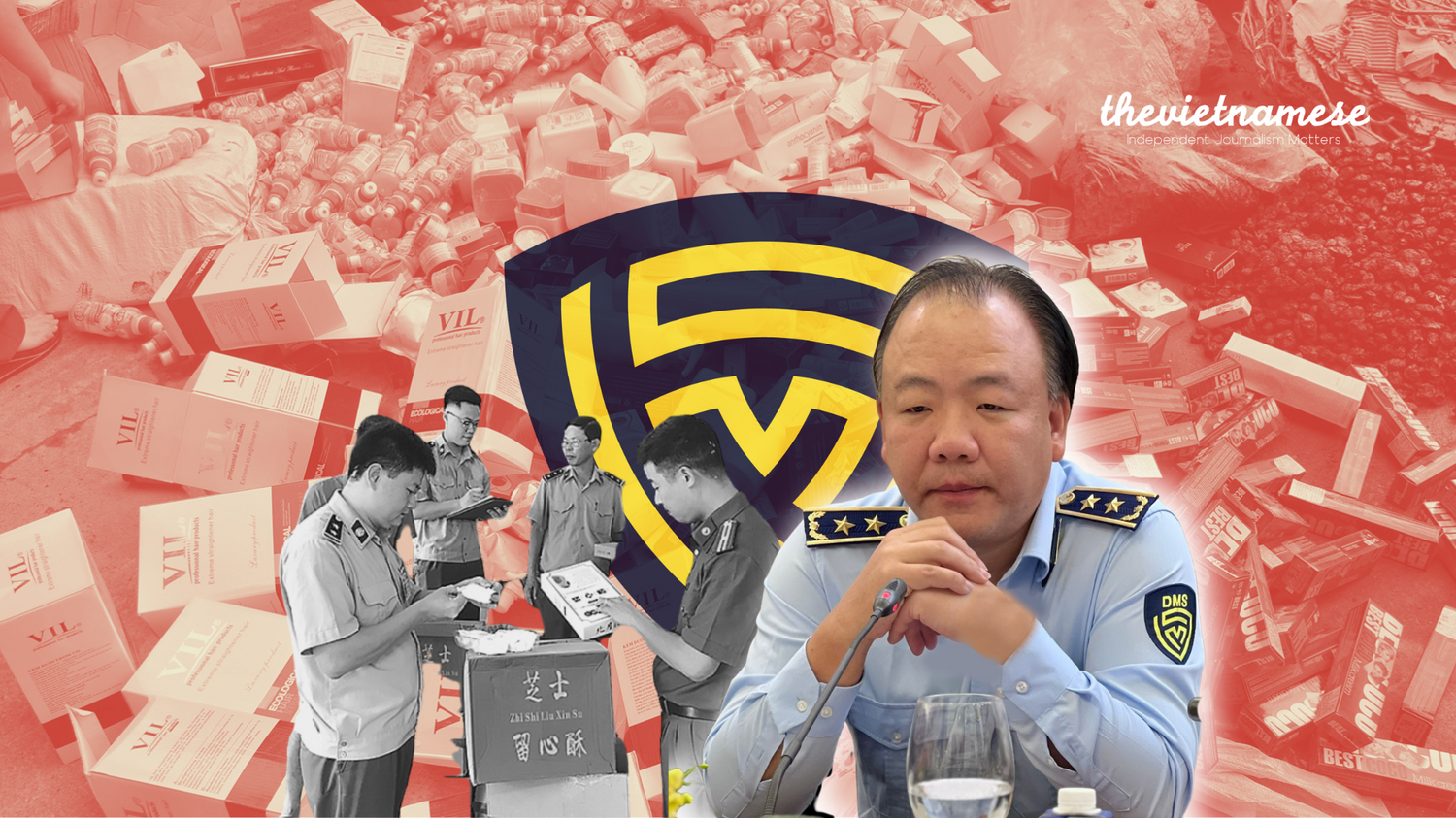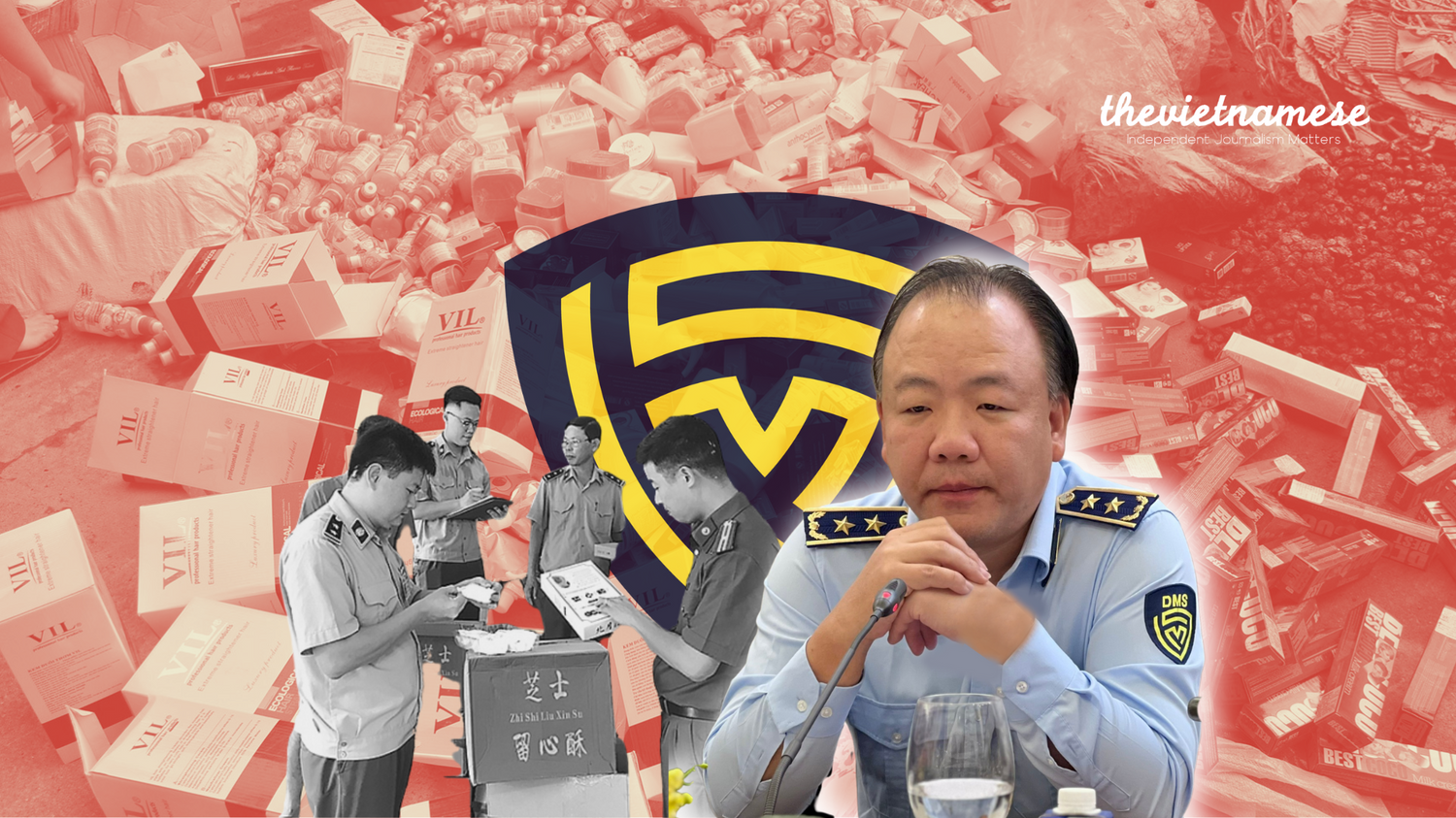
Hiếu Mạnh wrote this article in Vietnamese and published it in Luat Khoa Magazine on July 8, 2025. Đàm Vĩnh Hằng translated it into English for The Vietnamese Magazine.
Despite years of enforcement efforts, the influx of counterfeit and smuggled goods continues to plague Việt Nam’s markets, raising an uncomfortable question: Are consumers complicit in sustaining this underground economy, or is the government failing in its duty to regulate effectively?
In recent years, the prevalence of counterfeit, imitation, and substandard products has not only grown in scale but has also become more sophisticated and organized, spanning across industries. From everyday essentials such as milk, meat, and medicine to high-end goods like fashion items and luxury handbags, nearly no sector is immune.
In 2024 alone, the Market Surveillance Agency uncovered 3,124 violations on e-commerce platforms: a 266% increase from 2023, with the value of seized goods totaling over 34 billion đồng.
The issue is not confined to online platforms; in a 2024 month-long inspection campaign by the Domestic Market Development Department, 3,114 cases of counterfeit goods—valued over 31 billion đồng were found in traditional markets and shopping centers as well.
Fragmented and Overlapping Governance
One key reason counterfeit products continue to openly circulate is the fragmented and uncoordinated approach among regulatory agencies. The task of inspecting and handling counterfeit goods is divided among a dizzying web of ministries—including Industry and Trade, Public Security, Finance, Health, and Agriculture—as well as numerous local departments.
This web of overlapping responsibilities often results in inaction, a situation aptly described by the Vietnamese saying “cha chung không ai khóc” (“a shared child is left uncared for”).
When violations occur, competent agencies often shirk responsibility and pass the blame. The recent case involving fake milk sold by Rance Pharma and Hacofood Group is a prime example. In the aftermath of the scandal, at least three separate government bodies—the Ministry of Health, the Ministry of Industry and Trade, and local authorities—engaged in a bureaucratic blame game, with none assuming direct responsibility for the oversight failure.
Questionable Conduct Within Customs Agencies
The widespread presence of counterfeit and smuggled goods also stems from corruption and misconduct within customs operations. On June 23, 2025, investigative journalists from the Nông nghiệp và Môi trường newspaper published a video appearing to show traders openly transporting smuggled goods through customs checkpoints. Shockingly, the footage suggested that some officials were receiving a share of the contraband.
Instead of launching an immediate investigation, the General Department of Customs quickly issued a statement dismissing the report. The agency argued that the video’s date was unclear, the officers’ uniforms were outdated, some personnel had been transferred, and there was no definitive proof the vehicles carried contraband, ultimately calling the report misleading and suggesting a retraction was in order.
However, recent court cases reveal a pattern of deep-seated corruption that cannot be so easily dismissed. On June 26, 2025, a court in Hải Phòng began prosecuting 22 defendants in a massive smuggling scandal involving the Tài Lộc International Trading Company. Customs officials were accused of accepting over 8.1 billion đồng in bribes to allow more than 13,000 containers, worth over 1.8 trillion đồng, to pass through illegally.
Just weeks earlier, on May 14, a Hồ Chí Minh City court sentenced five individuals for illegally importing over 1,287 containers of used machinery, valued at 217 billion đồng. Among those sentenced was Vũ Xuân Đồng, a former customs official who received three years in prison for his role in facilitating the import of 698 of those containers in coordination with a former economic police officer.
Consumer Demand: Low Price Over Quality
Beyond regulatory failures, consumer demand itself plays a crucial role in sustaining the underground economy. A widespread mindset that “cheap is best” continues to fuel the market for counterfeit goods, particularly in rural and low-income areas where affordability often outweighs concerns about quality or authenticity.
At one market in Hà Tĩnh Province, for example, knockoff sneakers imitating global brands were being sold for just 250,000–370,000 đồng (~$10–15). Vendors there admit that consumers are fully aware the goods are fake but purchase them anyway because of the low price.
This rationale is not limited to those with low incomes. “I know these branded shoes and bags are fake,” said T.V., an office worker in Hà Nội. “But I can’t afford the real thing, and it doesn’t affect my health. So I still buy them.” Her statement captures a common mindset that helps the counterfeit market thrive.

